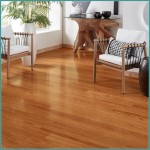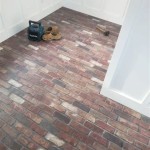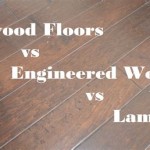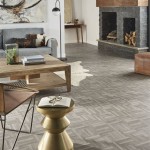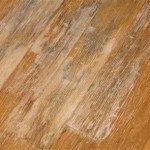Is Laminate Flooring Safe? A Comprehensive Overview
Laminate flooring has become a popular choice for homeowners and businesses alike due to its affordability, durability, and aesthetic versatility. It mimics the appearance of natural materials like wood, stone, and tile without the high cost and maintenance traditionally associated with them. However, concerns regarding the safety of laminate flooring, particularly related to potential emissions and the materials used in its manufacturing, are frequently raised. This article aims to provide a comprehensive overview of the considerations surrounding the safety of laminate flooring, examining potential risks and the measures taken to mitigate them.
The composition of laminate flooring plays a crucial role in its safety profile. Typically, laminate flooring comprises several layers fused together. The top layer, or wear layer, is a transparent, durable coating that protects the floor from scratches, stains, and fading. Beneath the wear layer is a decorative layer, which is a high-resolution photograph that gives the floor its visual appeal. The core layer is the thickest and provides the flooring with its structural stability. This core is usually made of high-density fiberboard (HDF) or medium-density fiberboard (MDF). Finally, a backing layer is added to provide balance and stability, preventing warping and protecting the core from moisture.
The primary safety concerns associated with laminate flooring stem from the materials used in the core layer, specifically the formaldehyde-based resins used to bind the wood fibers together in HDF and MDF. Formaldehyde is a volatile organic compound (VOC) that can off-gas from the flooring, potentially leading to health issues, particularly in individuals sensitive to chemicals. Exposure to formaldehyde can cause irritation of the eyes, nose, and throat, as well as respiratory problems and allergic reactions. Prolonged or high-level exposure has also been linked to more serious health concerns.
Understanding the potential health risks associated with formaldehyde, regulatory bodies and industry organizations have established standards and certifications to limit formaldehyde emissions from composite wood products, including laminate flooring. These standards aim to protect consumers by ensuring that laminate flooring products meet specific emission limits. The most notable of these standards is the California Air Resources Board (CARB) Airborne Toxic Control Measure (ATCM) Phase II, which is considered the strictest standard for formaldehyde emissions from composite wood products in the world. Compliance with CARB Phase II is often viewed as a benchmark for safety and environmental responsibility within the laminate flooring industry.
In addition to formaldehyde emissions, other concerns regarding the safety of laminate flooring relate to the presence of other potentially harmful chemicals in the materials used in its construction, such as phthalates and VOCs other than formaldehyde. Phthalates are plasticizers that can be found in some vinyl flooring or in the adhesives used to install laminate flooring, and they have been linked to various health concerns. VOCs emitted from adhesives, coatings, and other components of the flooring can contribute to indoor air pollution and potentially trigger respiratory problems or allergic reactions in sensitive individuals.
Formaldehyde Emissions and Regulatory Standards
Formaldehyde emissions represent the most prominent safety concern associated with laminate flooring. Formaldehyde is a naturally occurring chemical, but it can be released into the air from building materials containing formaldehyde-based resins. The level of formaldehyde released depends on several factors, including the type and amount of resin used, the age of the product, the temperature and humidity of the environment, and the ventilation of the space.
The CARB ATCM Phase II standard is designed to minimize formaldehyde emissions from composite wood products. It sets stringent limits for formaldehyde emissions from HDF and MDF, requiring manufacturers to use low-emitting resins and undergo rigorous testing to ensure compliance. Products certified to meet CARB Phase II standards are considered to be significantly safer than those that do not meet these requirements. Other certifications, such as the FloorScore certification by the Resilient Floor Covering Institute (RFCI), further demonstrate a product's compliance with VOC emission standards and contribution to good indoor air quality.
Consumers can take several steps to minimize their exposure to formaldehyde from laminate flooring. One of the most important steps is to choose products that are certified to meet CARB Phase II standards or other relevant emission standards. It is also advisable to ensure adequate ventilation in the space where the flooring is installed, especially during and immediately after installation. Allowing the flooring to off-gas in a well-ventilated area before installation can also help to reduce initial formaldehyde emissions.
Other Potential Chemical Concerns
While formaldehyde is the most widely discussed concern, other chemicals used in the manufacturing or installation of laminate flooring can also pose potential health risks. Phthalates, often used as plasticizers in vinyl flooring and some adhesives, have been linked to endocrine disruption and reproductive health issues. VOCs, emitted from various components of the flooring system, can contribute to indoor air pollution and trigger respiratory problems or allergic reactions.
To mitigate these risks, consumers can opt for laminate flooring products that are labeled as phthalate-free or have low VOC emissions. Water-based adhesives are generally preferred to solvent-based adhesives, as they tend to have lower VOC content. Green building certifications, such as LEED (Leadership in Energy and Environmental Design), often require the use of low-emitting materials, providing an additional assurance of product safety.
Material Safety Data Sheets (MSDS), now known as Safety Data Sheets (SDS), provide information about the chemical composition, potential hazards, and safe handling procedures for materials used in laminate flooring. Reviewing the SDS for the flooring and any adhesives or sealants used in the installation can help consumers make informed decisions about the safety of these products. Manufacturers are legally obligated to provide SDS for their products, making this information readily available to consumers.
Installation Practices and Ongoing Maintenance
Even with the selection of low-emitting laminate flooring, proper installation and ongoing maintenance are crucial for minimizing potential health risks. Adhesives used for installing laminate flooring can release VOCs, so it is important to choose low-VOC adhesives and ensure adequate ventilation during and after installation. Following the manufacturer's instructions for installation is essential to ensure proper sealing and prevent moisture buildup, which can contribute to mold growth and further degrade indoor air quality.
Regular cleaning and maintenance can also help to reduce the accumulation of dust, allergens, and other pollutants on the flooring surface. Using appropriate cleaning products specifically designed for laminate flooring is important to avoid damaging the surface or releasing harmful chemicals. Harsh chemicals and abrasive cleaners should be avoided, as they can damage the wear layer and potentially release more VOCs. Regular vacuuming and damp mopping with a mild detergent are generally sufficient to keep laminate flooring clean and maintain good indoor air quality.
In summary, while laminate flooring can present some safety concerns related to formaldehyde emissions and other chemicals, these risks can be effectively mitigated by choosing certified products, following proper installation practices, and maintaining the flooring properly. Consumers who are particularly sensitive to chemicals may want to consider alternative flooring options, such as solid wood or tile, which generally have lower emission rates. However, with careful selection and responsible use, laminate flooring can be a safe and aesthetically pleasing option for many homes and businesses.

Is Laminate Flooring Safe For Health Singapore

Is Laminate Flooring Safe For Kids Singapore

Laminate Flooring For Kids A Secure And Stylish Choice

Types Of Laminate Flooring Explained Twenty Oak

How To Repair Laminate Flooring Forbes Home

Are Our Laminate Floors Safe

What Is Laminate Flooring Direct

How To Install Laminate Flooring Forbes Home

How To Repair Laminate Flooring The Home Depot

What Is Low Voc Flooring And It As Safe Non Toxic Easiklip Floors
Related Posts

